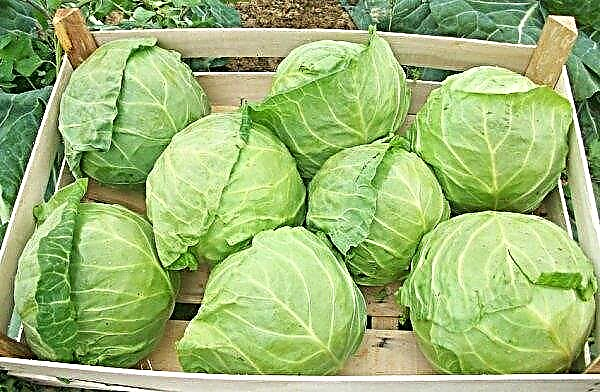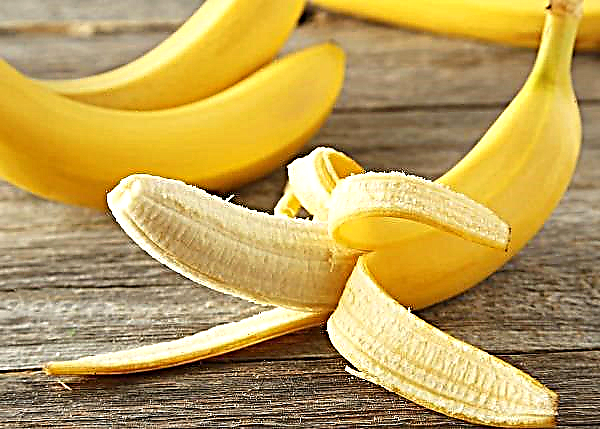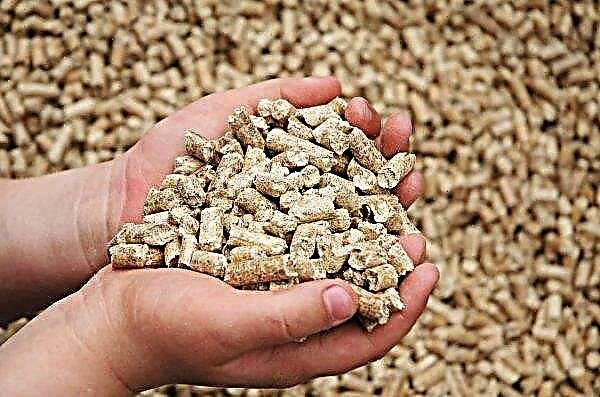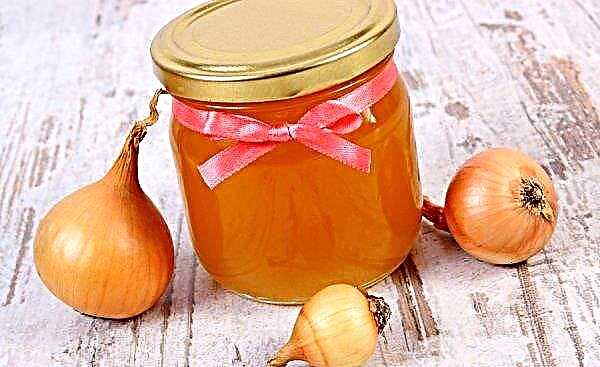Today, starch is considered an ambiguous product, which, on the one hand, replaces a lot of additives harmful to human health, and on the other hand, it may not always be useful. There is an opinion that the highest percentage of this substance is found in potatoes, but this is fundamentally not true. Starch can be found in many products, and especially in wheat and its derivatives. So what is wheat starch, what are its properties and how is it produced, is considered in this article.
What is wheat starch
Wheat starch is a loose powder of white or light yellow color. It contains both coarse (20–36 μm in size) and fine (2 to 10 μm) grains. Upon closer inspection, you will notice that they are all characterized by a round or elliptical shape. In the middle of each particle is the "eye".
Based on organoleptic properties (quality indicators obtained by analysis of taste, smell), as well as composition, starch can be conventionally divided into 3 grades:
- higher;
- the first;
- extra.
 This product often acts as an ingredient in recipes for various dishes. You should know that in this case its name may be mentioned in Latin - amylum tritici.
This product often acts as an ingredient in recipes for various dishes. You should know that in this case its name may be mentioned in Latin - amylum tritici.
Amount of Starch in Wheat
Starch is the main carbohydrate of wheat grain. It is contained in the endosperm (in the tissue formed in the seeds of most flowering plants during fertilization) and can make up 48–62% of the total grain weight. Moreover, this indicator varies depending on the variety of wheat, its variety and growing conditions.
Numerous studies of Canadian durum wheat of several years yield an average starch content of 51–52.5%. Whereas in durum wheat grown in America, its content varies between 59.9–62%.Important! Grain moisture also affects starch levels. Its optimal value is 14%, since with increasing starch is broken down into dextrins and sugar.

Gluten Composition and Presence
In its composition, on which the properties ultimately depend, starch can be somewhat modified, but in general it refers to carbohydrates and vegetable proteins. First of all, agronomic and environmental conditions for growing wheat, as well as grain genetics, have such a behavior. So:
- from soft varieties of wheat contains a large amount of lipids and protein;
- of hard varieties consists mainly of amylose and small granules.
The nutritional value of 100 g of the substance is 300 kcal, while it contains 0.1 g of protein and 79.6 g of carbohydrates. In addition, this product has an alkaline pH, and therefore, entering the body, oxidizes it.
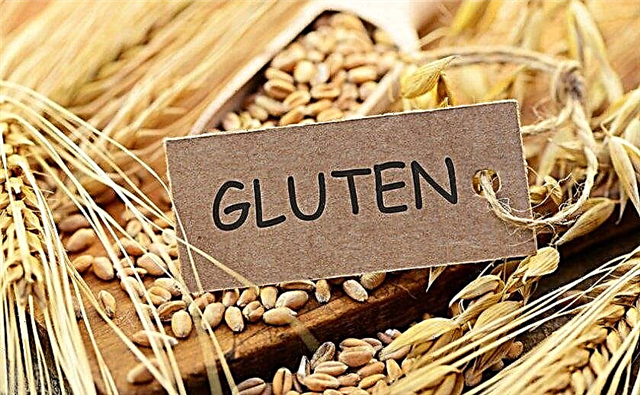 As for gluten, it is absent from starch only if its production complies with European food quality standards, as indicated by a special mark on the product.
As for gluten, it is absent from starch only if its production complies with European food quality standards, as indicated by a special mark on the product.
Wheat Starch Properties
Depending on the type of wheat grains, starch can have different properties:
- Soft wheat varieties give this product increased viscosity and lower sensitivity to gelation, as well as swelling and retrograde (gelatinization process).
- Solid - significantly reduce the temperature regime of gelatinization. Also, this type has a more crystalline structure, an increased level of viscosity and retrograde. However, all these properties reduce the digestibility of the product by the human body.
Did you know? By mixing the starch and water in equal proportions, you can get the famous Newtonian fluid, which is characterized by a rapid growth rate of viscosity, significantly exceeding the speed of exposure.
Despite the wheat varieties from which starch was obtained, it has a neutral taste, high heat resistance, specific viscosity and a long shelf life. Like all products, this powder has both beneficial and harmful properties for the human body.
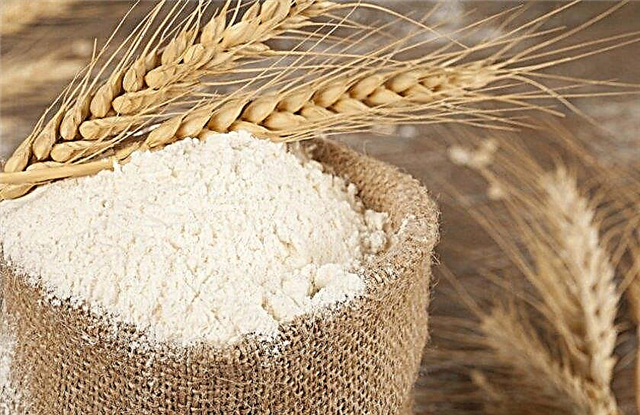
- So, the first include:
- high energy value of the product;
- activation of the gastrointestinal tract due to the high content of amylose (acts as a massager of the intestinal wall);
- recovery of the body after a jump in blood sugar.
Despite this, this substance has disadvantages, and the main one is high calorie content, which can cause weight gain, as well as a complete lack of vitamins and minerals. There is, although in small quantities, the likelihood of intolerance to this product, which may result in allergies, flatulence, bloating.
Production
In total, there are several basic methods for the production and production of starch from wheat. However, domestic and foreign enterprises use different technologies.
Did you know? Gruel based on starch and water is often used as a hemostatic and healing agent, which can be applied directly to small wounds or mild burns (for example, sunburn).
So, the main foreign ones include:
- Marten's method (also called “sweet”) - characterized by mixing wheat flour with water using a dough mixer. The resulting mass is transferred to a special bunker in which it undergoes scraping. After 30–40 minutes it is pumped out by a dosing pump into a special machine, which proceeds to the washing of starch. This device consists of hexagonal and round sieve drums equipped with small holes (diameter - about 2 mm) and immersed 1/3 in water. Through intensive rotation, starch is separated from gluten. Next, the resulting substance enters a special collection, where it undergoes a concentration procedure, mechanical tertiary treatment, as well as dehydration. As a result, three types of products are obtained at the output: pure starch, mixed (gluten) and gluten.
- The method of "whipped test" - was first developed in the United States and has some distinctive features in the initial stages of the receipt procedure. When mixing dough from flour and water, the structure of the mixture has a more liquid consistency - after beating it is sent immediately through the cutting pump to a container with water. Here, starch is also separated by vigorous stirring in sieves.

At Russian enterprises
Russian starch and syrup enterprises use a different method of production, organized according to the short-circuited scheme developed in the mid-1950s. last century. Wheat grains act as raw materials, and the technology itself consists of several main stages.
Soak
The grain is preliminarily cleaned of foreign impurities. Further, for softening, it enters a solution with sulfuric acid, the temperature of which is maintained at + 45 ° C. The exposure time is from 36 to 48 hours.
Splitting up
At this stage, the grain is subjected to double crushing. In this case, fine crushers are used, which allow to achieve the finest grinding. The output is a kind of porridge from milk and fiber.
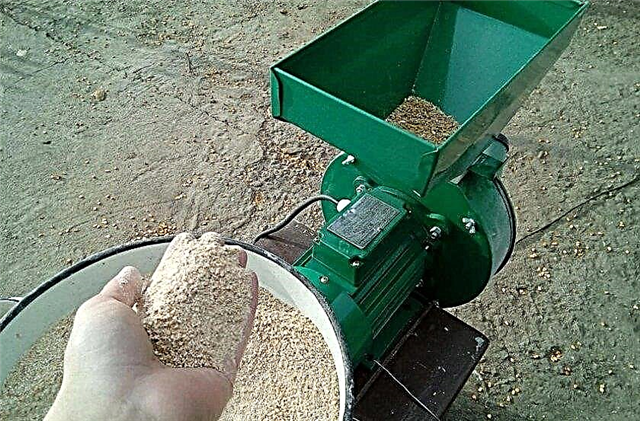
Flushing
Rinsing is used to separate starch milk from other impurities. This procedure is carried out using a vacuum filter on a hydrocyclone unit. In the process of straining, about 70% of soluble substances of grain are separated from the porridge.
Centrifugation
Refined milk enters special centrifugal separators. It is here that he is released from protein.
Drying
Drying is an important step in obtaining the desired consistency. At this stage, solid particles are freed from unnecessary moisture. The procedure is carried out using warm air.
Screening
The final stage of the whole procedure is screening. It allows you to get a homogeneous mass, devoid of lumps, accidentally left impurities, as well as grains, which are sticky oleisterized grains.

Other methods of obtaining the product
In addition to various technical methods for producing starch, this substance can also be obtained at home, however, the procedure is labor intensive. Due to the high value of wheat starch in the field of cooking, as well as its low prevalence on store shelves and its high cost, some still undertake this business. The first thing you should pay attention to is the quality of the flour, its class must be the highest. You should know that dough free from starch is called seitan or wheat meat, which is widely used by vegetarians for food.
Further technology is as follows:
- Flour is mixed with water until a dense dough is obtained.
- Then they wash the dough - place it in a container with cold water and knead.
- White colored water is poured into a separate bowl, and fresh is poured into the dough. The procedure lasts until the water remains clean.
- The drained water is defended until a sediment forms at the bottom, after which it is drained, and the white grains, which are starch, are dried.
 Despite the lack of taste, this mass has a fairly dense structure and high nutritional value. During the preparation process, the dough can be boiled with spices, and then cooked like regular meat (i.e., fry, add to salads and even make kebab out of it).
Despite the lack of taste, this mass has a fairly dense structure and high nutritional value. During the preparation process, the dough can be boiled with spices, and then cooked like regular meat (i.e., fry, add to salads and even make kebab out of it).
The use of wheat starch
Due to its properties, wheat starch is widely used in various fields. So, in addition to the main areas (meat processing industry and cooking), this substance is also used in the pulp and paper industry (up to 60% of total consumption), as well as textile (for tissue processing), pharmacological (as a filler of tablet forms of drugs) and construction (is the main component for glue and wallpaper). In addition, this powder can often be found in plastic, adhesive, various coatings and foams.
In the meat processing industry
Starch is often found in the meat processing industry.
Manufacturers add it to the products, seeking:
- enrich it with vegetable protein;
- increase the density and homogeneity (uniformity) of the structure;
- extend shelf life.
 In addition, this component can also be found in dumplings, as it is able to increase the plasticity of the product, as well as to prevent boiling and sticking during cooking and to extend the shelf life. Naturally, such characteristics increase the attractiveness of the product in the eyes of customers.
In addition, this component can also be found in dumplings, as it is able to increase the plasticity of the product, as well as to prevent boiling and sticking during cooking and to extend the shelf life. Naturally, such characteristics increase the attractiveness of the product in the eyes of customers.
In cooking
Wheat starch is widely used in the production of confectioneries (jellies, sweets, cakes, Turkish delight, marshmallows, etc.) and bakery products (bread, any pastries, pasta, etc.). Replacing 1/3 of wheat flour with this powder, the product acquires softness and volume, and is also stored for much longer. Such properties are achieved due to gelatinization - the process of swelling of its particles under the influence of hot water (its temperature should be in the range +63 ... + 65 ° С).
Important! It is the aging (syneresis) of starch paste that causes stale bread.
It is the quality of this component that forms the properties of the dough (its consistency, water absorption capacity and sugar level), and also affects the final state of baking. In addition, wheat starch is an indispensable component in the preparation of various syrups, soft drinks, beer. This element acts as a thickener for products such as jelly, sauces or various dressings. And thanks to its complex carbohydrate structure, it is often used in medical and dietary recipes.

Due to its wide field of application, starch is one of the most commonly consumed components. Taking into account both its positive and negative effects on the body, we can confidently say that it is harmless to health and is needed only to improve product quality. However, this applies to those cases when a person is healthy and leads an active lifestyle. Otherwise, a high carbohydrate content can lead to a set of extra pounds.


